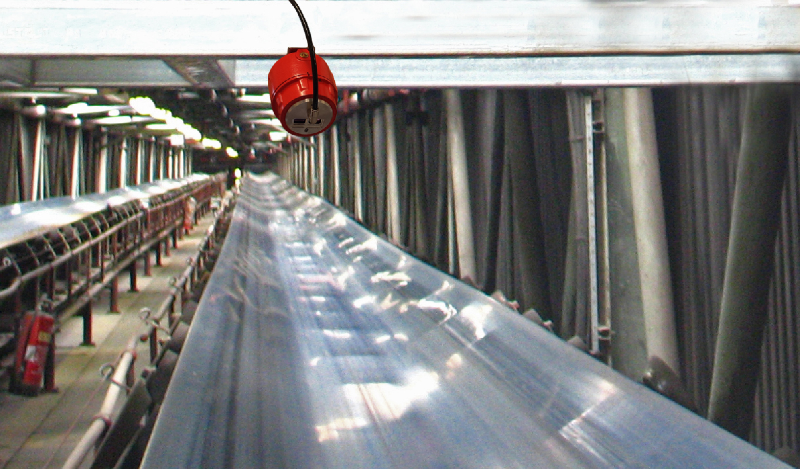 The 5610 infrared transit heat sensor from Patol has been awarded ATEX and IECEx certification for use in hazardous areas with the potential for dust explosion. It is housed within an explosion-proof Exd enclosure inside which any internal explosion or electrical problem would remain restricted in order to prevent propagation to any potentially explosive atmosphere outside.
The 5610 infrared transit heat sensor from Patol has been awarded ATEX and IECEx certification for use in hazardous areas with the potential for dust explosion. It is housed within an explosion-proof Exd enclosure inside which any internal explosion or electrical problem would remain restricted in order to prevent propagation to any potentially explosive atmosphere outside.
The sensor is part of the 5000 Series from Patol, suppliers of a range of safety related equipment and systems.
Protection from the threat of fire and explosion
The 5610 has been specifically created for hazardous environments for providing protection on conveyor belts or systems wherever materials are being continuously transported, when the capacity for self ignition provides an exceptional threat. The 5610 model is ATEX?and IECEx approved for Zone 21 & 22, where combustible or conductive dusts are present. Zone 21 (‘an area in which an explosive dust-air mixture is likely to occur for short periods in normal operation’), Zone 22 (‘an area in which an explosive dust-air mixture is not likely to occur, and if it occurs it will only exist for a very short time due to an abnormal condition’). The 5610 includes sensitivity settings, auto/manual reset sequence and single/coincidence voting from the two individual internal detectors for the alarm trip shutdown outputs.
For use in potentially explosive atmospheres
Explosive atmospheres within the workplace can be caused by combustible dusts. If there are sufficient quantities of the substance mixed with air, then it simply requires a source of ignition to cause an explosion, possibly resulting in significant damage, serious injury and even loss of life. The move from coal to biomass fuels in the generation of electricity, for instance, has resulted in the increased possibility of dust explosions in our power plants.
Infrared fire detection
All materials produce infrared radiation. The frequency and level of these emissions is dependent on the temperature, physical nature and circumstance of the material. Fires – and even more importantly potential fire conditions – can be detected by a variety of different infra-red detectors. These include spark monitors, flame sensors and black body heat detectors, which can succeed where other fire or heat sensors would be ineffective due to the extreme parameters and conditions of the application.
The Patol 5000 Series is a range of early warning, infrared transit heat sensors designed to detect any materials’ ‘black body emissions’ moving at 0.5 to 6m/s. The filters within the sensors are set-up to select not the normal visible spectrum, but light with the longer wavelengths of the infrared emissions that indicate temperature anomalies within materials. Thus attuned, they detect not only ignited material in a full flaming condition but also abnormal, lower pre-ignition temperatures. They can trigger at temperatures as low as 100°C – an ability not shared by spark monitors and flame sensors.
Series 5000 infrared fire and heat detectors
The range uses enhanced monitoring technology via twin, high integrity detection circuit channels for maximum reliability. It is specifically designed to protect working environments where the potential for fire or explosion is a common condition, even where the constant movement of combustible materials is a routine occurrence.
One such example would be the coal feed systems on power stations. There, coal stored on an external stockpile can smoulder with little adverse effect for long periods of time. However, once imported into the power station it could have disastrous consequences on the plant’s conveyor systems, within hoppers and blending plants. This consideration is of particular importance when Powder River Basin (PRB) coal is being transported as it has the ability to self ignite even over very short periods of time. Even with less volatile materials, protective measures are obviously needed to reduce the possibility of the outbreak of fire.
Detecting black body emissions on moving conveyor belts
Located above or beside the conveyor or roadway along which the monitored material is being transported, the sensors can detect fire initiating materials before they have reached the ember or flame condition. They detect a change in black body emissions even at relatively low temperatures as the material moves through its field of view. The sensors are operated in conjunction with an air supply maintaining a positive air pressure at the unit’s optical lens. The air supply, which can be either low or high pressure depending on the location, prevents dust settling on the lens. It is particularly essential in dirty environments such as those where coal is conveyed.
The Patol 5000 Series has applications within industries such as power generation, coal mining, process plant, road transportation and rail networks and has been specifically designed to meet the rigors of these environments and to provide the reliability required.
In addition to manufacturing its own range of linear heat detectors and infrared sensors, privately owned, British company Patol undertakes turnkey safety projects covering many aspects including the fabrication of special electronic equipment, software design, system engineering, contract management, installation and maintenance.

